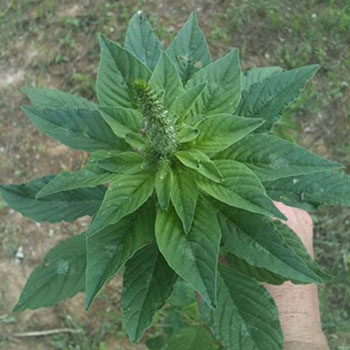
I have been semi-confined to the house for almost a month. What I thought was a summer cold turned out to be bronchitis. While I have taken the prescribed medications, my husband, who is not a doctor, recommended I stay inside while “pig weed” was in the air. I have lived in Greenville for forty-five years and have never heard of “pig weed,” but supposedly it is a local weed that give some people fits, especially me. Every year at this time I seem to have the same symptoms. Once again, my husband came to my rescue and bought me a jar of local honey. Supposedly that does the trick. So, every morning I have toast and local honey. Local is the key word here.
The late Jim Conrad published Blacklands: Historical Sketches of Hunt County, Texas in 1992. It’s a wonderful collection of oral histories with many of the old-timers around here including his numerous conversations with local beekeeper Lee Rice.
Supposedly when Davy Crockett came into Texas from Indian Territory, he found a huge bee tree located near present-day Ladonia. He and his fellow travelers cut down the tree, and enjoyed the fresh honey found inside. Crockett then wrote a letter praising the “land of milk and honey” to one of his sons stating that he planned to locate in that spot once he helped cleared out the problems with Mexico. Of course, Crockett didn’t survive the Alamo, but the letter made its way back to Tennessee.
Early day farmers collected tubs brimming with white comb honey from the wild honeybees in the native forests we know as “thickets.” Bee trees were cut down in late spring before settlers filled large wash tubs with the honey to use for food, medicine (pure honey is not only a remedy for allergies but also an antiseptic), ornamentation and barter. As the frontier days faded away and Greenville became a market center, new industries sprang up in town.
About the turn of the 20th century, Greenville and many, many more Southern towns began to diversify into small industries. Bee keeping was one such business that co-opted well with mill work. In 1913 Greenville Power and Manufacturing Company was located at 3010 St. John Street. City Directory ads for that year note that the business manufactured screens, mill work for house building, and interior finish in hard and soft. In small print the ad noted that beehives and bee-keepers’ supplies were a specialty.
Further investigation reveals that at the same location was Weathers Grain Co., with the same telephone numbers. Weathers Grain Company advertised wholesale flour, meal, bran and all kinds of feed stuff (for livestock). The business also sold coal, ear corn, shucks, and custom corn mill. Owner of both Weathers Grain and Greenville Power and Manufacturing was H. Thomas Weathers. The businesses were managed by W. W. Horn, who pops up again in 1922.
Mr. Weathers business was not the only establishment to invest in beehives and beekeeping equipment. William H. White owned White Manufacturing on Bee Street near Wright Park. He was not involved in sales of grain, but strictly mill work and beekeeping.
Nine years later two manufacturing companies advertised beekeeping equipment in conjunction with their mill work. Graham Manufacturing Company located at 2401 Washington Street and managed by W. A. Graham. Further north on Stonewall Street was Greenville Manufacturing Company, managed by W. W. Horn, late manager of Weathers Grain and Greenville Power and Manufacturing Companies.
They probably knew the virtues of toast and honey for breakfast.
